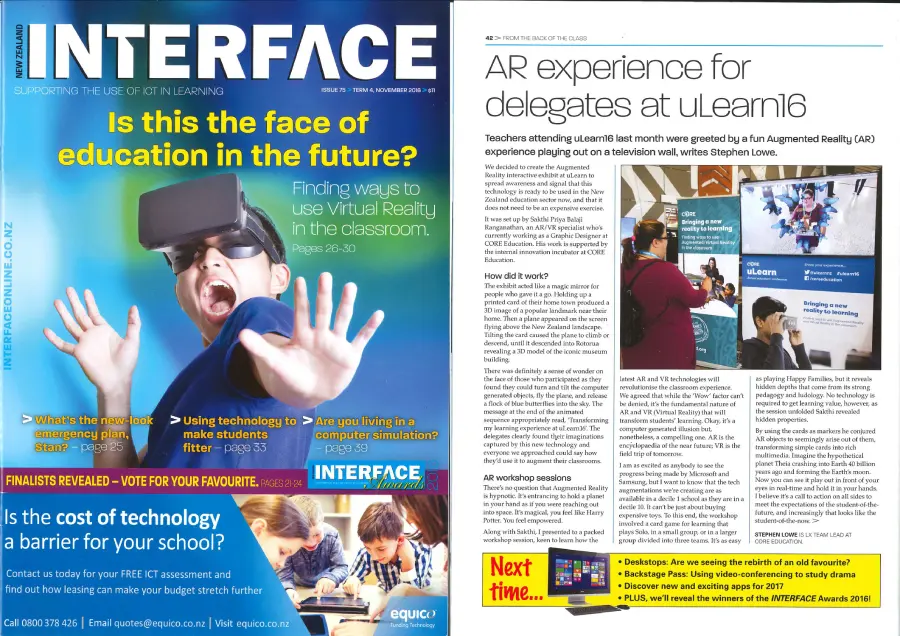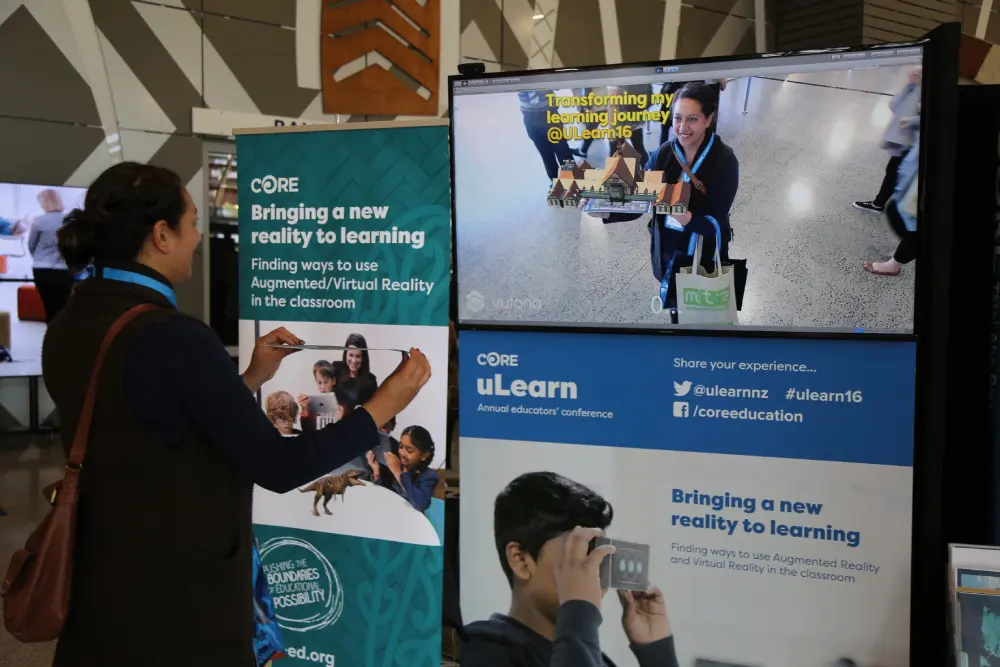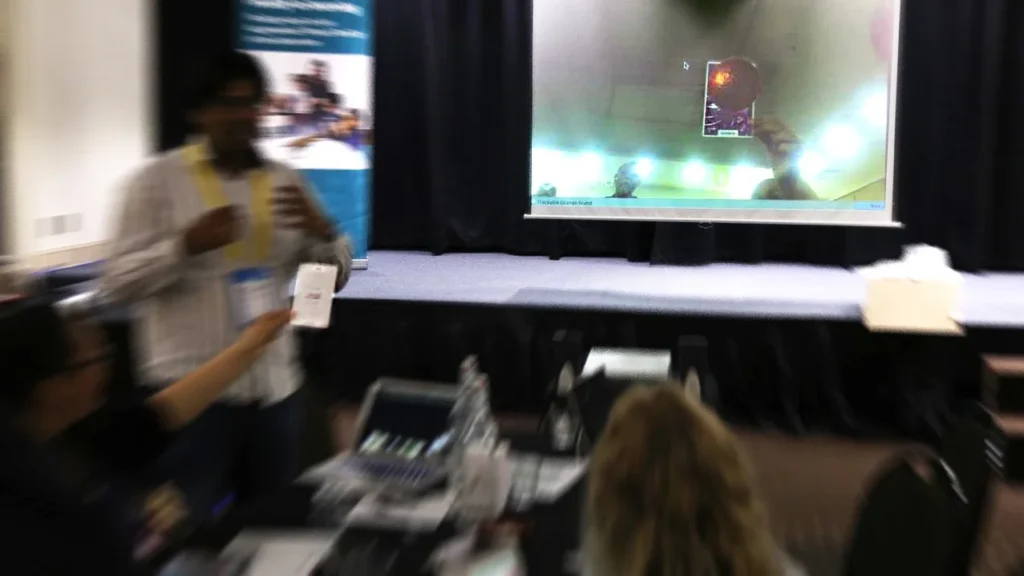
Teachers attending ulearnl6 last month were greeted by a fun Augmented Reality (AR) experience playing out on a television wall,
We decided to create the Augmented Reality interactive exhibit at uLearn to spread awareness and signal that this technology is ready to be used in the New Zealand education sector now, and that it does not need to be an expensive exercise.
It was set up by Sakthi Priya Balaji Ranganathan, an AR/VR specialist who’s currently working as a Graphic Designer at CORE Education. His work is supported by the internal innovation incubator at CORE Education.

How did it work?
The exhibit acted like a magic mirror for people who gave it a go. Holding up a printed card of their home town produced a 3D image of a popular landmark near their home. Then a plane appeared on the screen flying above the New Zealand landscape. Tilting the card caused the plane to climb or descend, until it descended into Rotorua revealing a 3D model of the iconic museum building.
There was definitely a sense of wonder on the face of those who participated as they found they could turn and tilt the computer generated objects, fly the plane, and release a flock of blue butterflies into the sky. The message at the end of the animated sequence appropriately read, ‘Transforming my learning experience at uLearn16’. The delegates clearly found their imaginations captured by this new technology and everyone we approached could say how they’d use it to augment their classrooms.

Augmented Reality workshop sessions
There’s no question that Augmented Reality is hypnotic. It’s entrancing to hold a planet in your hand as if you were reaching out into space. It’s magical, you feel like Harry Potter. You feel empowered.
Along with Sakthi, I presented to a packed workshop session, keen to learn how the latest AR and VR technologies will revolutionize the classroom experience. We agreed that while the ‘Wow’ factor can’t be denied, it’s the fundamental nature of AR and VR (Virtual Reality) that will transform students’ learning. Okay, it’s a computer generated illusion but, nonetheless, a compelling one. AR is the encyclopedia of the near future; VR is the field trip of tomorrow.
I am as excited as anybody to see the progress being made by Microsoft and Samsung, but I want to know that the tech augmentations we’re creating are as available in a decile 1 school as they are in a decile 10. It can’t be just about buying expensive toys. To this end, the workshop involved a card game for learning that plays Solo, in a small group, or in a larger group divided into three teams. It’s as easy as playing Happy Families, but it reveals hidden depths that come from its strong pedagogy and ludology. No technology is required to get learning value, however, as the session unfolded Sakthi revealed hidden properties.
By using the cards as markers he conjured AR objects to seemingly arise out of them, transforming simple cards into rich multimedia. Imagine the hypothetical planet Theia crashing into Earth 40 billion years ago and forming the Earth’s moon. Now you can see it play out in front of your eyes in real-time and hold it in your hands. I believe it’s a call to action on all sides to meet the expectations of the student-of-thefuture, and increasingly that looks like the student-of-the-now.



